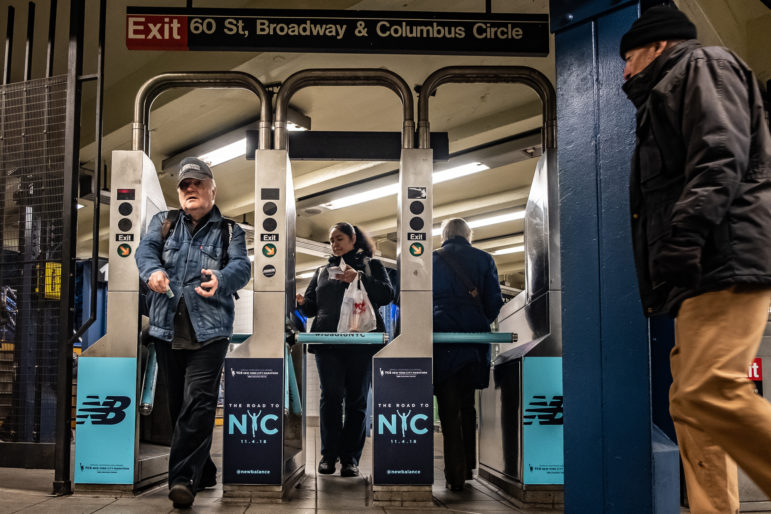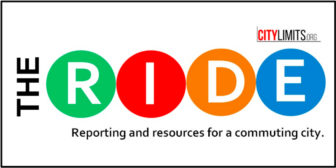
Adi Talwar
Our city has become less fair because the most affordable means of getting around, subways and buses, has deteriorated.
I have a friend from London who lives in New York. After a recent visit home she told me how impressed she was with the transit system. “They have new stations!” she said, “And the trains arrive so frequently! It has come so far from what I remember. In comparison, New York’s system is just miserable.” Then she asked, “What has New York done wrong?”
Anyone traveling in New York City knows what she means. Subways and commuter rails are constantly delayed, buses are stuck in congestion. Riders are tired, late, and stressed.
How did we fall so far behind other world class cities? The answer is complicated, of course, and involves political and funding decisions over decades. But one big mistake was not passing congestion pricing in New York City over ten years ago. If we had, traffic would flow more freely and we would have had hundreds of millions every year in dedicated revenue to invest in maintaining and expanding transit service. Instead we’re talking about signal failures, fare hikes and service cuts.
We can’t make this mistake again in 2019.
Congestion pricing is the policy of charging people to drive in the busiest parts of a city. In New York, though proposals vary, it would generally apply to a cordon south of 60th Street, excluding the FDR. Drivers would pay a toll, similar in cost to Queensboro and Brooklyn Battery Tunnels or the Whitestone Bridge (drivers would not be double tolled).
It is one of the most critical steps we can take to start to claw our way out of our transit and traffic mess. New revenue would pay for more bus and subway service, and things like new station elevators. Streets would be less congested leading to faster travel times, less pollution and a lot less aggravation.
After London passed congestion pricing in 2003, the city saw a 15 percent reduction in traffic, and a 20 percent reduction in greenhouse gas emissions, according to the Tri-State Transportation Campaign. The city added 300 new buses so there was better bus service when the system came online. Once congestion pricing revenue started flowing, the city was able to build new subway lines and made improvements to signals so trains could come more frequently. The air quality benefits translated into nearly 1,900 added years of life for Londoners. In Stockholm, congestion pricing brought similar benefits, and reduced childhood asthma cases by a whopping 50 percent.
Meanwhile, New York City missed an opportunity to pass congestion pricing in 2008 – the proposal died at the hands of the State Legislature – and the effects are clear. We have not been prepared for our economic and population growth, or for the effects of extreme weather.
Our city has also become less fair because the most affordable means of getting around, subways and buses, has deteriorated. In fact, Regional Plan Association research shows that New York City residents have seen their commute times grow substantially. In Queens, for example, 27 percent of commuters were traveling more than an hour to get to work in 2010. In 2017, that number rose to over 32 percent. The other boroughs saw a similar growth in long commutes.
The MTA now has credible plans to fix subways, buses and commuter rails, but they won’t go anywhere without new resources.
Congestion pricing is this first step to fixing our transit network and creating a fairer city. But that alone won’t be enough. And since a penny saved is a penny earned, part of the solution must be MTA reforms that save costs on projects large and small. Our research has found MTA costs on its large expansion projects could be reduced by as much as a third through a series of reforms, saving billions of dollars and rebuilding public trust so that we can keep building the transit that our region needs.
Looking forward, RPA envisions a different kind of economic growth, what some call “inclusive growth,” where economic expansion benefits all residents, not just the select few. Having reliable buses and subways, and not needing to own a car or pay for a taxi or an Uber ride when your subway goes down, is a key element of this. Congestion pricing will provide immediate improvements to everyone who relies on transit or who can’t afford to be stuck in traffic. It will also demonstrate that we can make the politically difficult choices that will be needed to continually modernize and expand the transit network to support a growing economy and reach people living in neighborhoods underserved by the current bus and subway network.
This is why over a hundred organizations, including anti-poverty groups, support the concept of congestion pricing in New York. And the numbers here are clear—the majority of outer borough New Yorkers, 56 percent, take public transit to work in Manhattan or elsewhere, according to the Community Service Society, and would benefit from better transit. Just 4 percent of outer boroughs residents drive to work in Manhattan, and would be subject to a new congestion pricing fee. Of this 4 percent, the “overwhelming majority have moderate and higher incomes” according to Community Service Society. For those small percentage of drivers who are lower income, a specific plan could be developed to ensure they aren’t even more burdened.
Implementing congestion pricing must be at the forefront of the agenda in 2019. It won’t fix all of our problems, but it is a cornerstone of any long term plan to shift course and create a fairer, more sustainable city.
Kate Slevin is the senior vice president of state programs and advocacy at the Regional Plan Association. To learn more about Regional Plan Association’s proposals for our region, visit rpa.org.










4 thoughts on “CityViews: In 2019, Congestion Pricing Needs to be a Cornerstone of A Fairer City”
I like aspects of the ‘Move NY’ plan because it would lower tolls on the Verrazzano, Whitestone and Throggs Neck bridges. I think it’s way more than 4% of outer borough drivers who drive to their jobs in Manhattan. Look at the Gowanus/BQE any weekday morning. Even if car owners are more well-off than other NYC residents why would you make it harder for people with higher disposable income to get to Manhattan where they are going to spend some of that money in local businesses?
Automobile ownership in NYC is up by 43577 vehicles just since 2015. I think it’s because as New Yorkers have families they see a car as a necessity even with all the costs and aggravation associated with it. Some just want the convenience of a private vehicle. Others have work commutes to places that are not accessible by mass transit.
NYC vehicle registrations 2015 vs 2017 (pdf) :
https://files.acrobat.com/a/preview/f69e4851-a80a-4d42-abfe-3071f4cee410
Make the lirr rail line within the five burrough same as the subway pricing and create more jobs in the outer boroughs by fixing the zoning laws to create more housing in lower density area.
Tell this [person] to go out on road in Manhattan and see who is causing congestion. It is not Uber or yellow cabs. It is those stupid delivery trucks taking two lanes off by double parking in Midtown. If you are taking data from London than this [author] should also need to research that in London all the deliveries is done in night. Two main reason for congestion in Manhattan. One is double park delivery trucks & garbage pickup trucks in morning Rush hour. What do you expect.
London is London and NYC is NYC. Quite different really. The trains my be miserable but the pay is great. Am I right? In London the air may be 15% cleaner with CP but its still toxic.